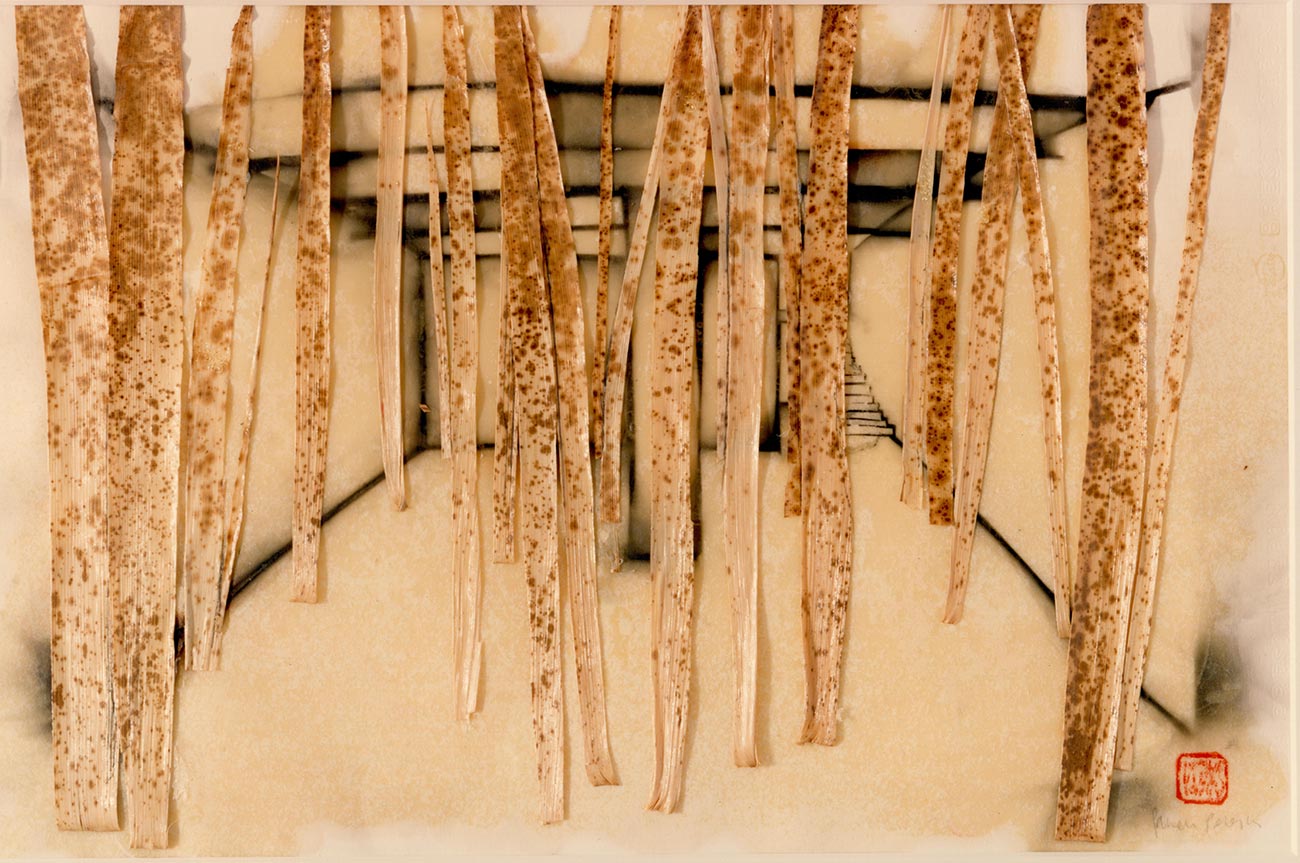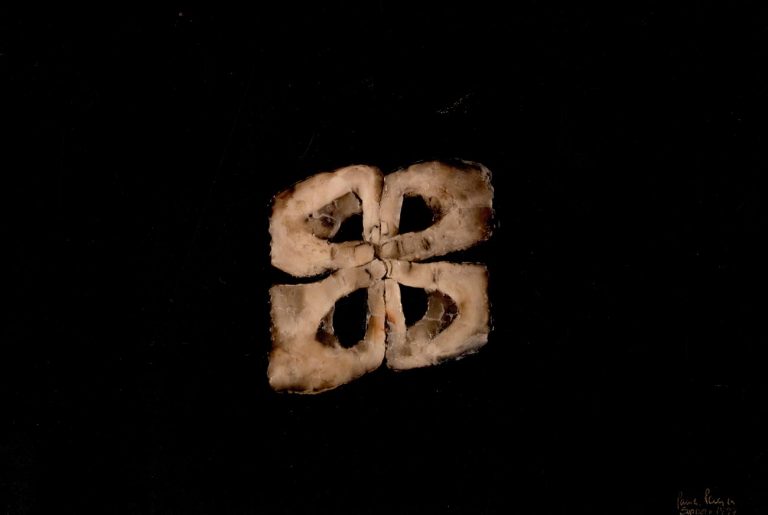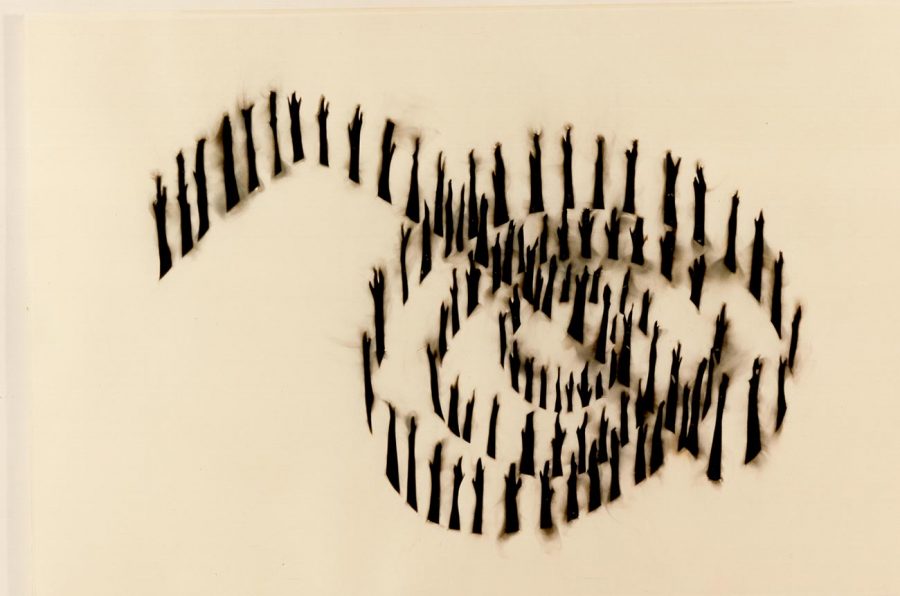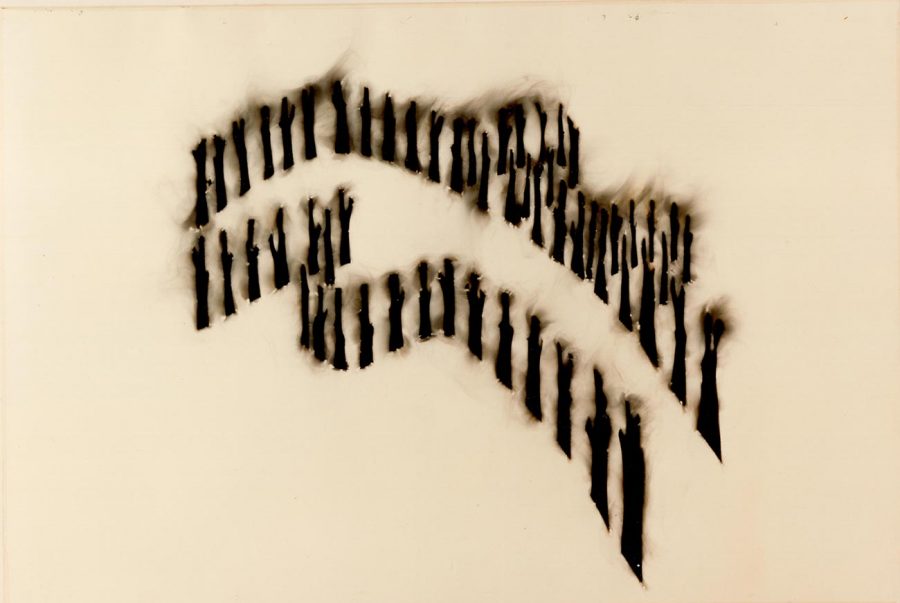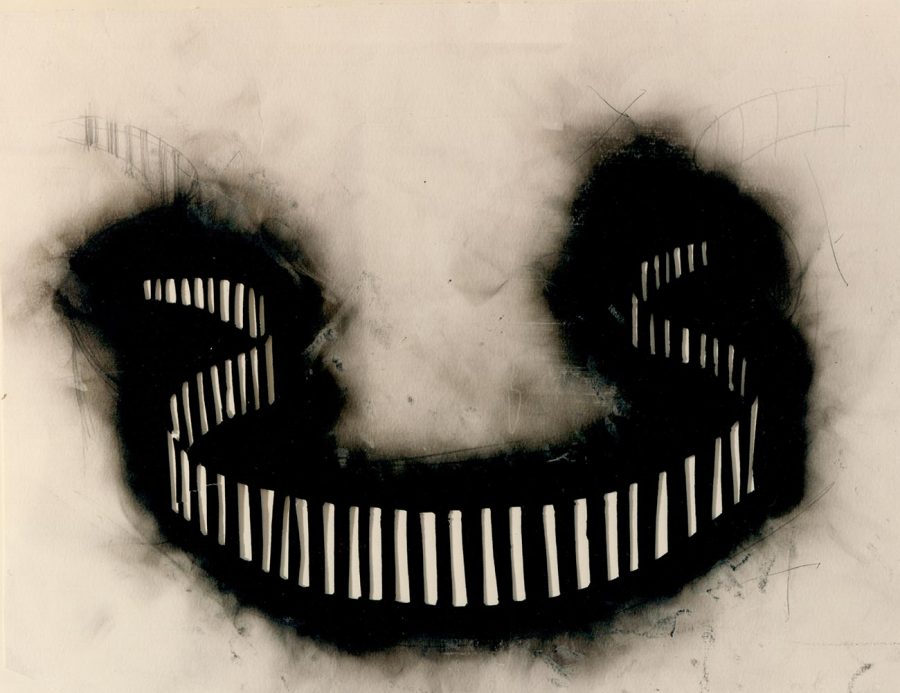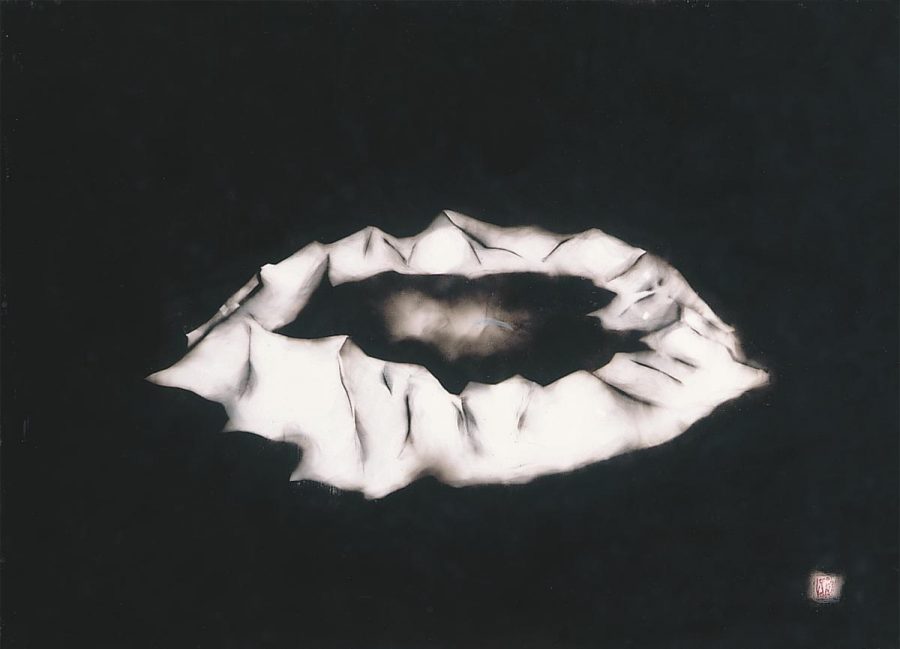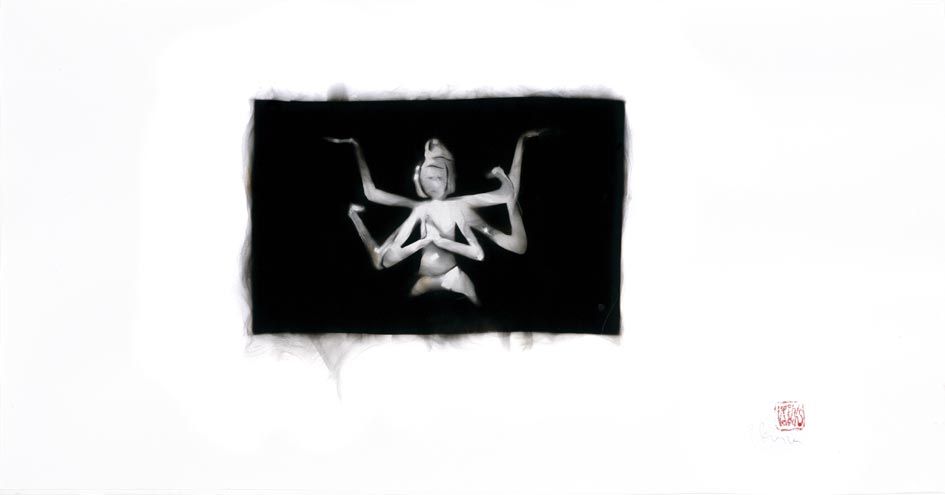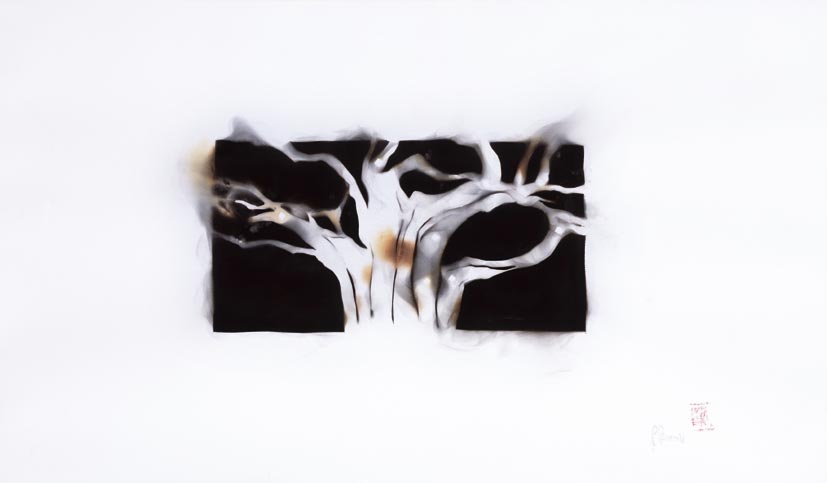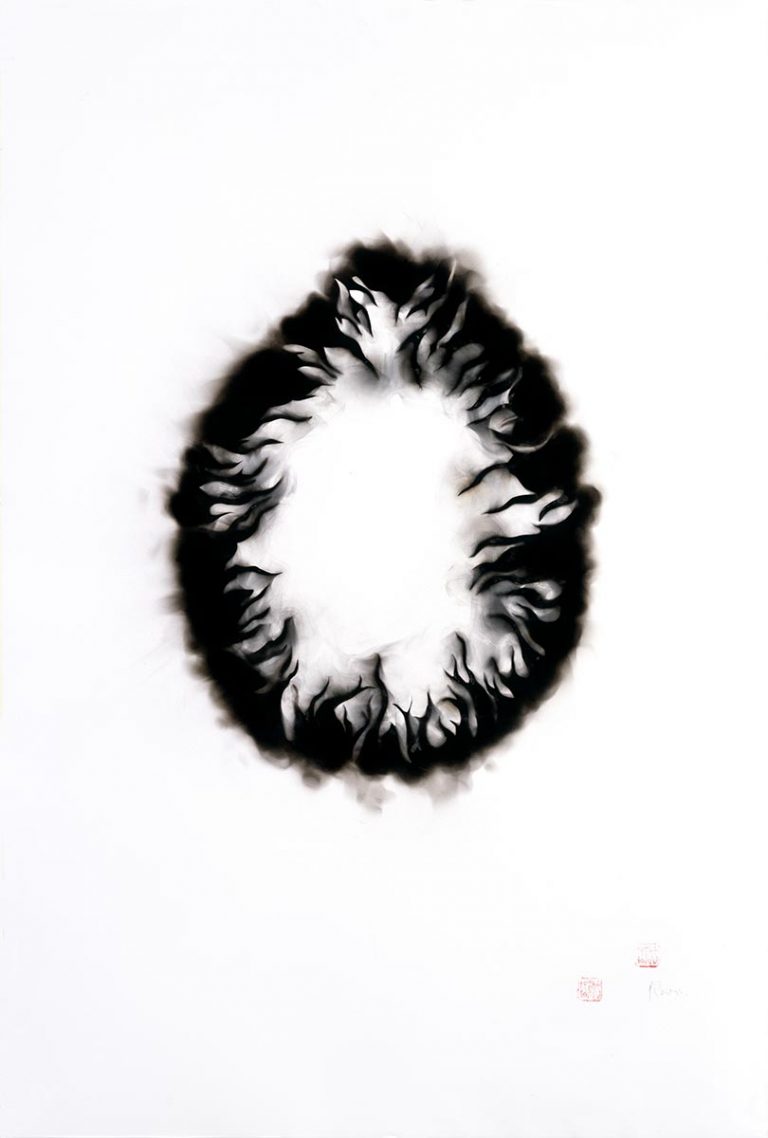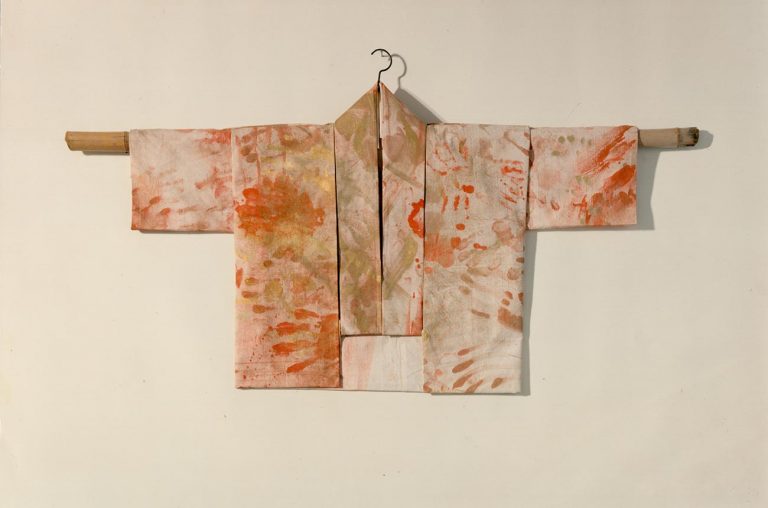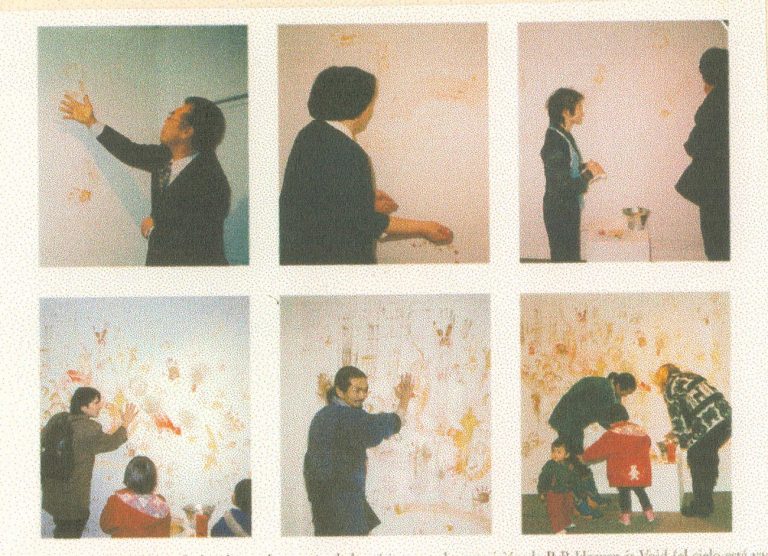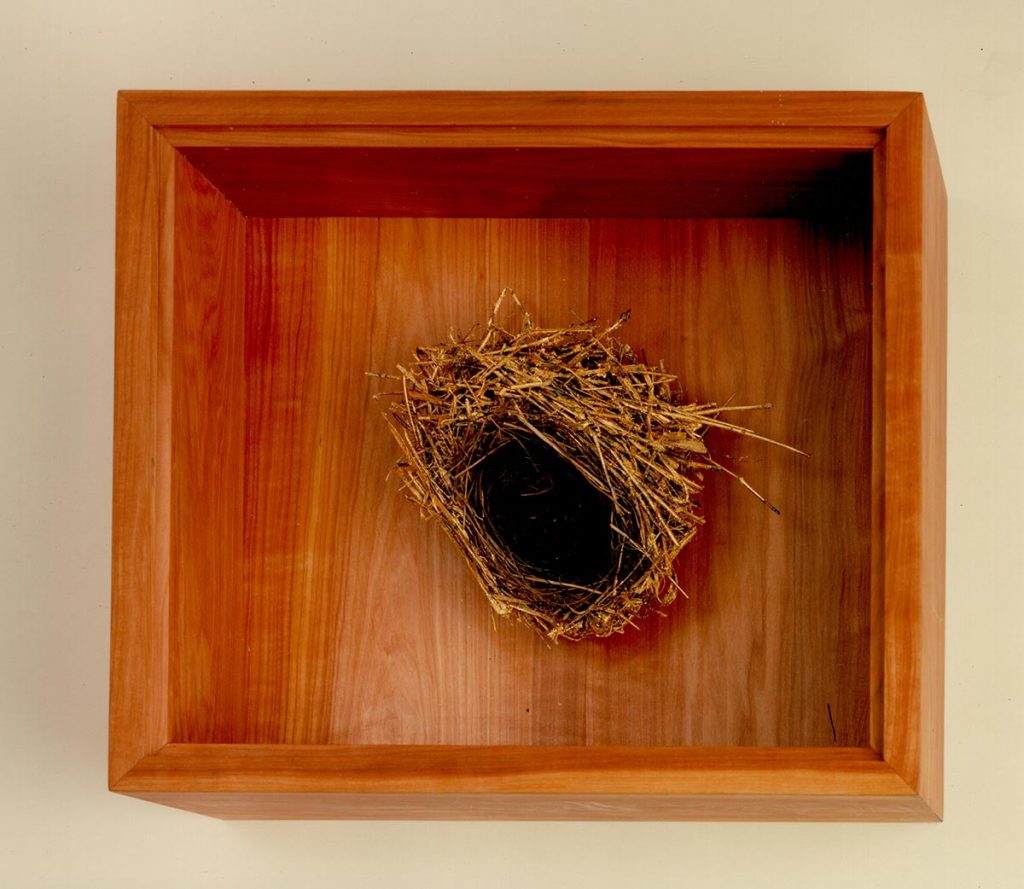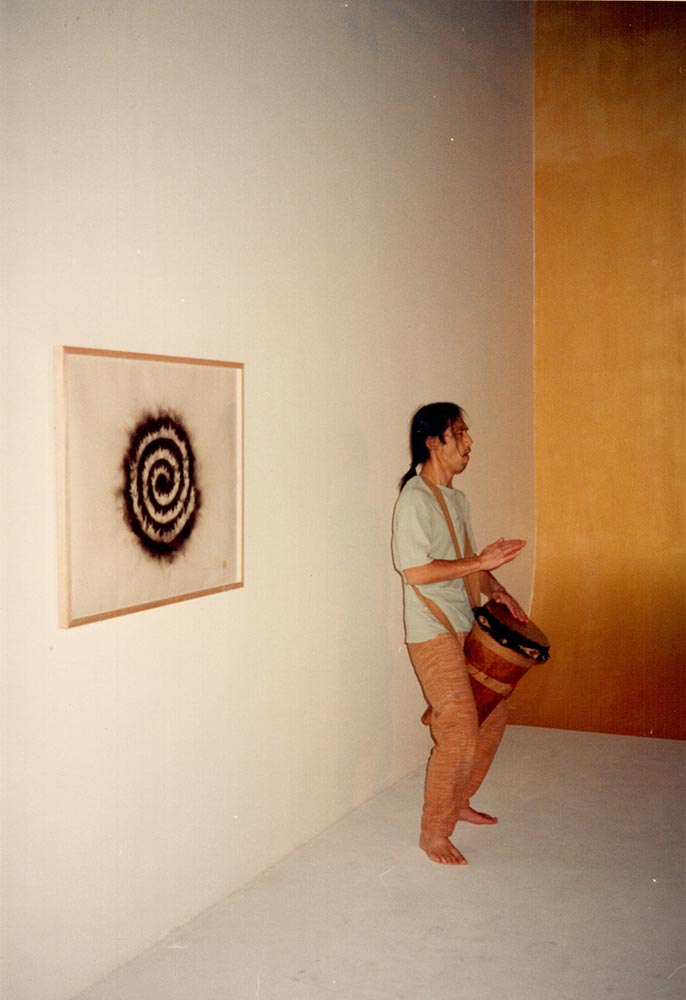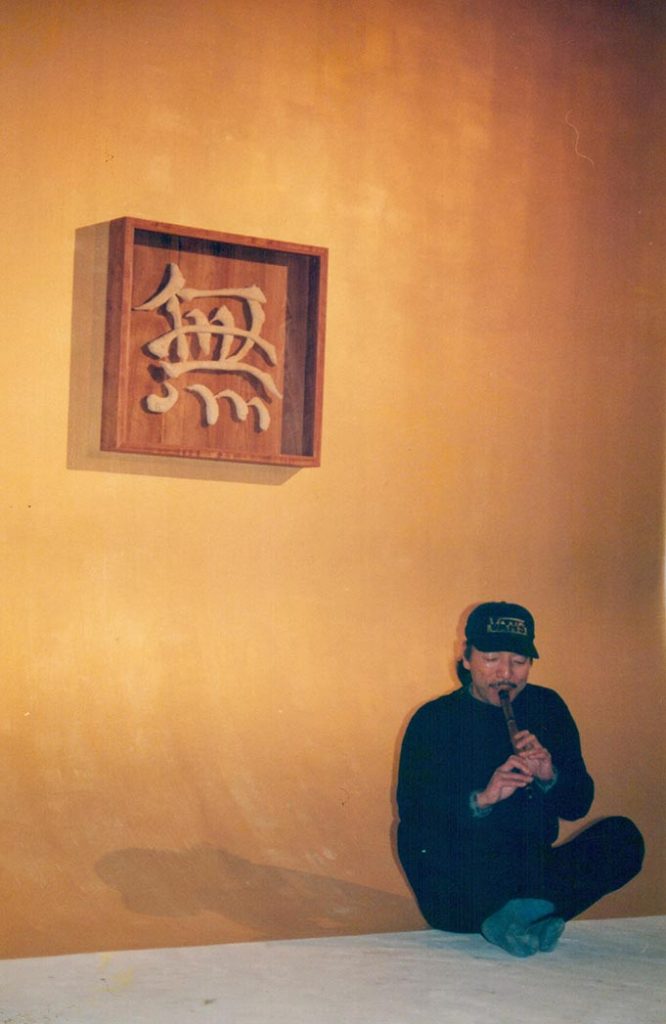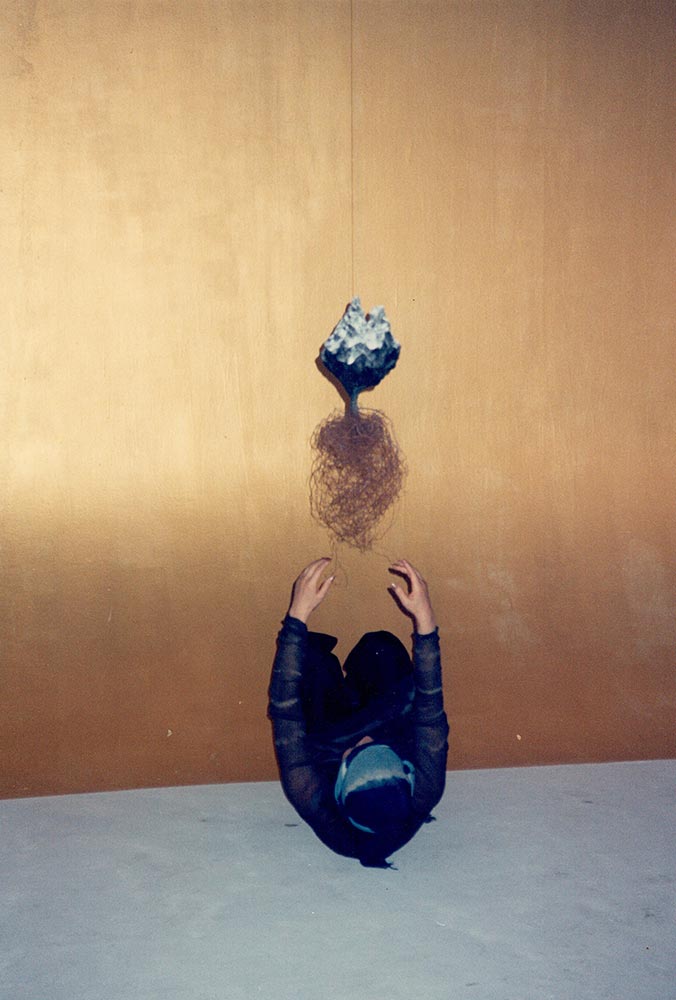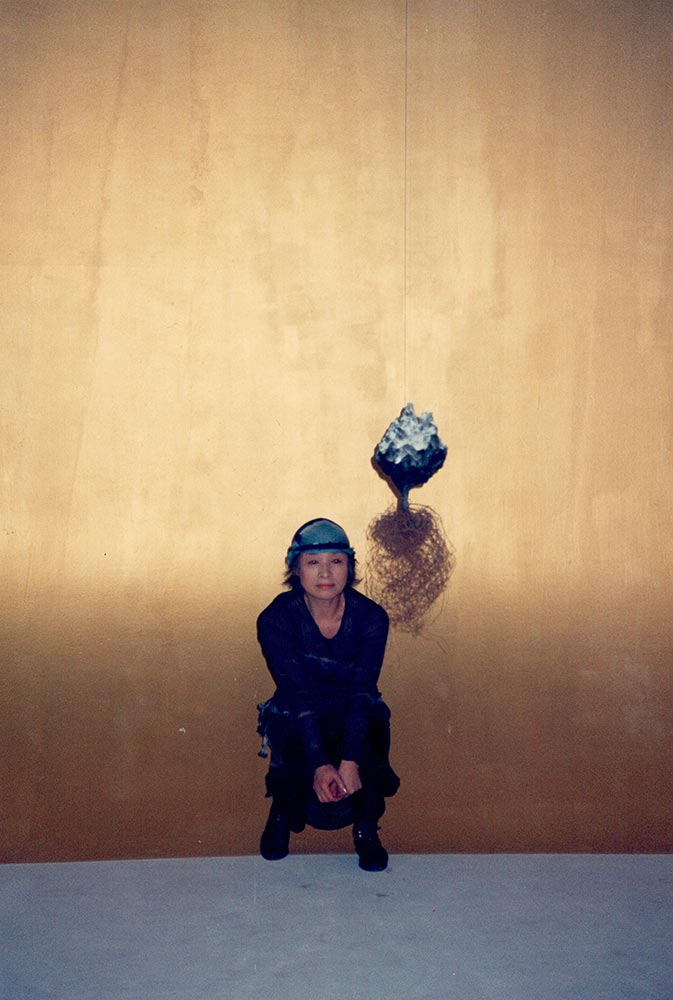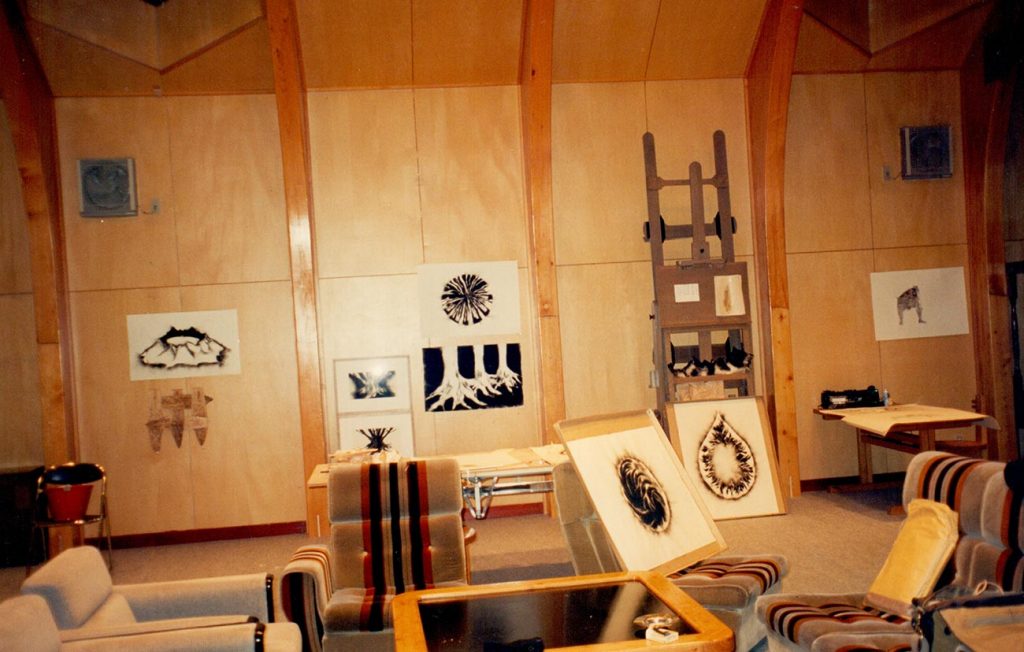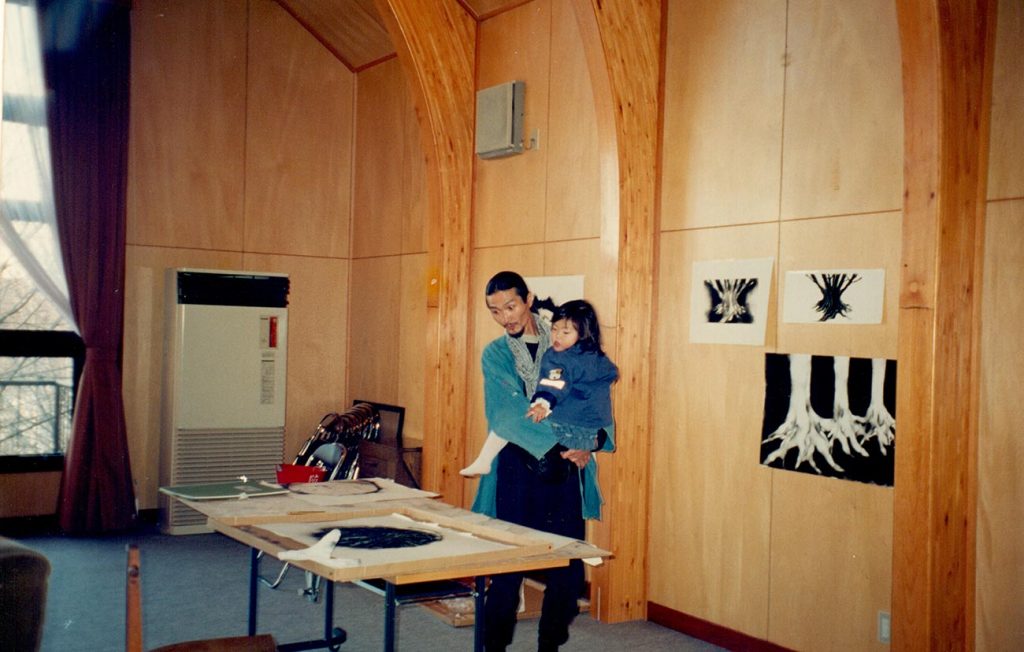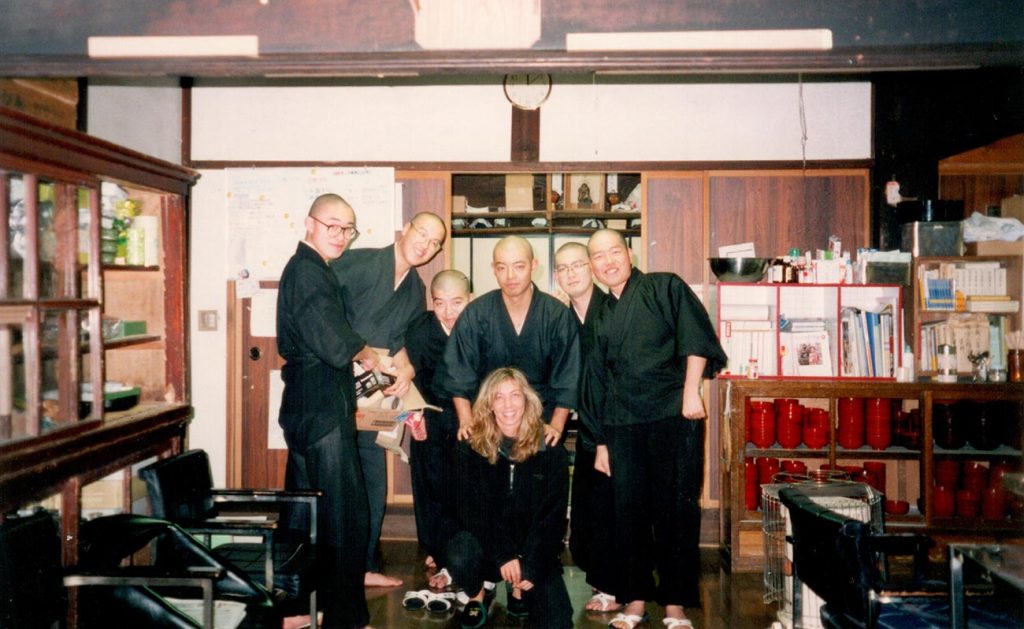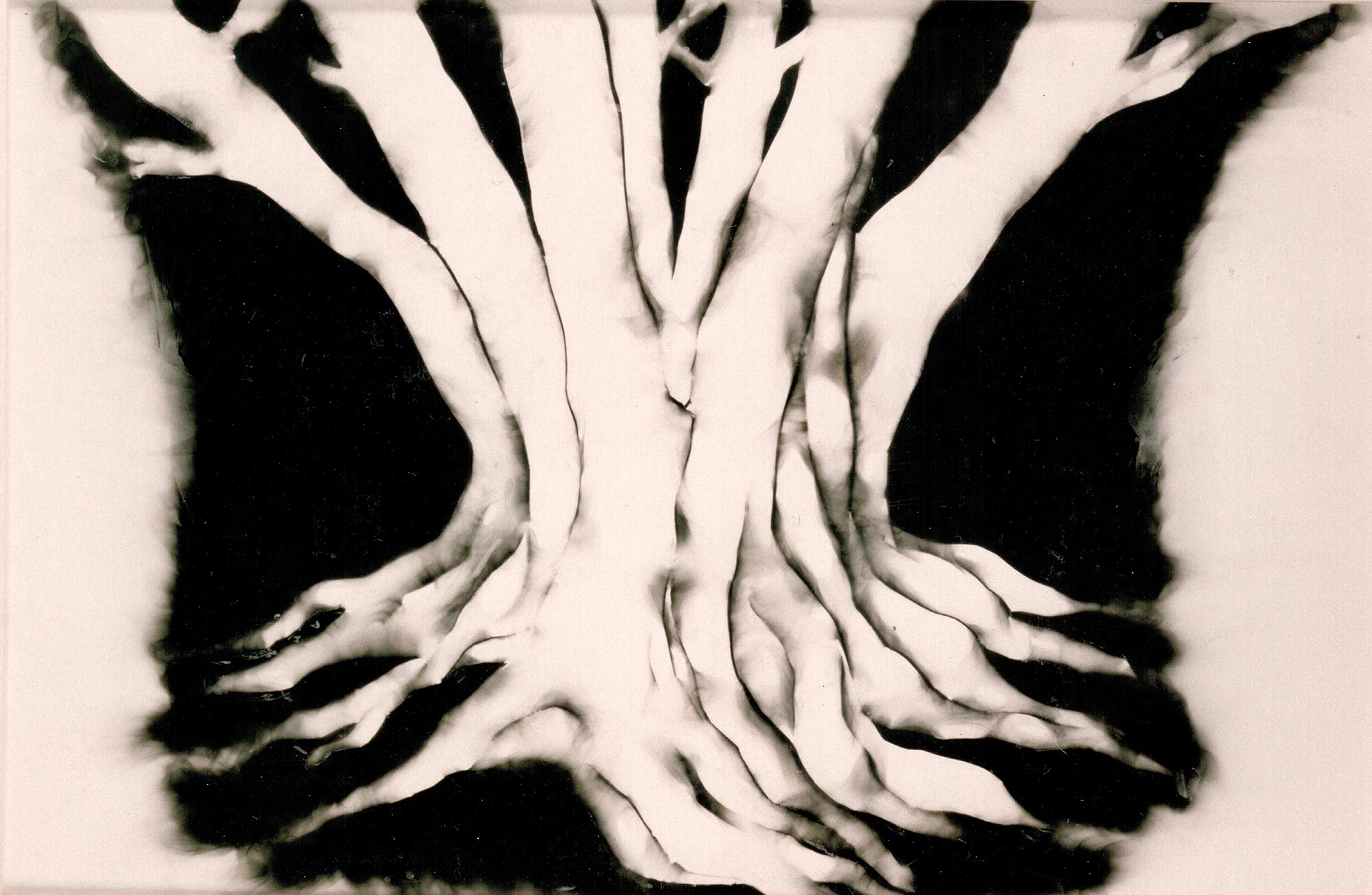
Ni bosque ni viento ni luna, la noche espesa. 1996. Humo sobre papel. 112 x 120 cm. Colección Galería Moriarty, Madrid.
HEAVEN IS VOID
Ten wa Mu the aru
1998
Travelling to learn how “to be” scratching the best experiences of life, to self-prolong, reaching to the epicenter of the values that give meaning to a life. Such has been Pamen Pereira’s intense journey through Japan. Intense in the experience of inter-communication with the few men who are preparing to receive one of the most enduring ancestral philosophies in habitats-temples embedded in nature, and propagating in the arduous, painful, and willingly joyful learning of adaptation until the maximum “stabilization” of the body with the spirit. More than a physical transfer, the artist has made a trip to the origins of millenary performances in the merging of man with nature, to reconcile and give new vigor to notions already installed in her previously such as unlimited time, the symbolic relationship of the lives in between, the unifying light, or the powerful awareness of the insignificance of the “self”.
Wax, Gold and Smoke, Teresa Blanch
Extract from the text Cera, oro y humo by Teresa Blanch for the catalogue of the Non hai beira exhibition on the occasion of the Union Fenosa Museum of Contemporary Art scholarship abroad.
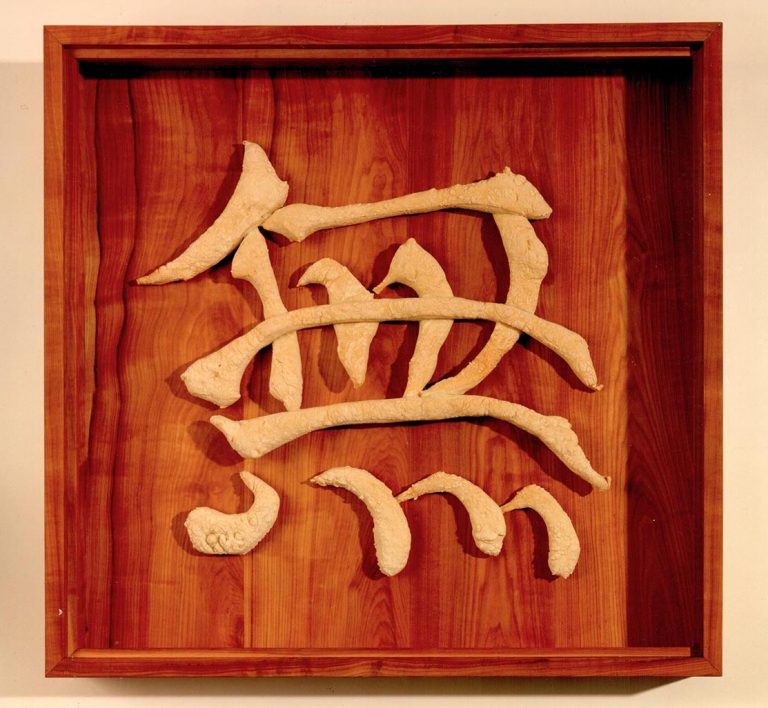
Mu (vacío). 1997. Pan y madera. 66,5 x 69 x 9,5 cm.
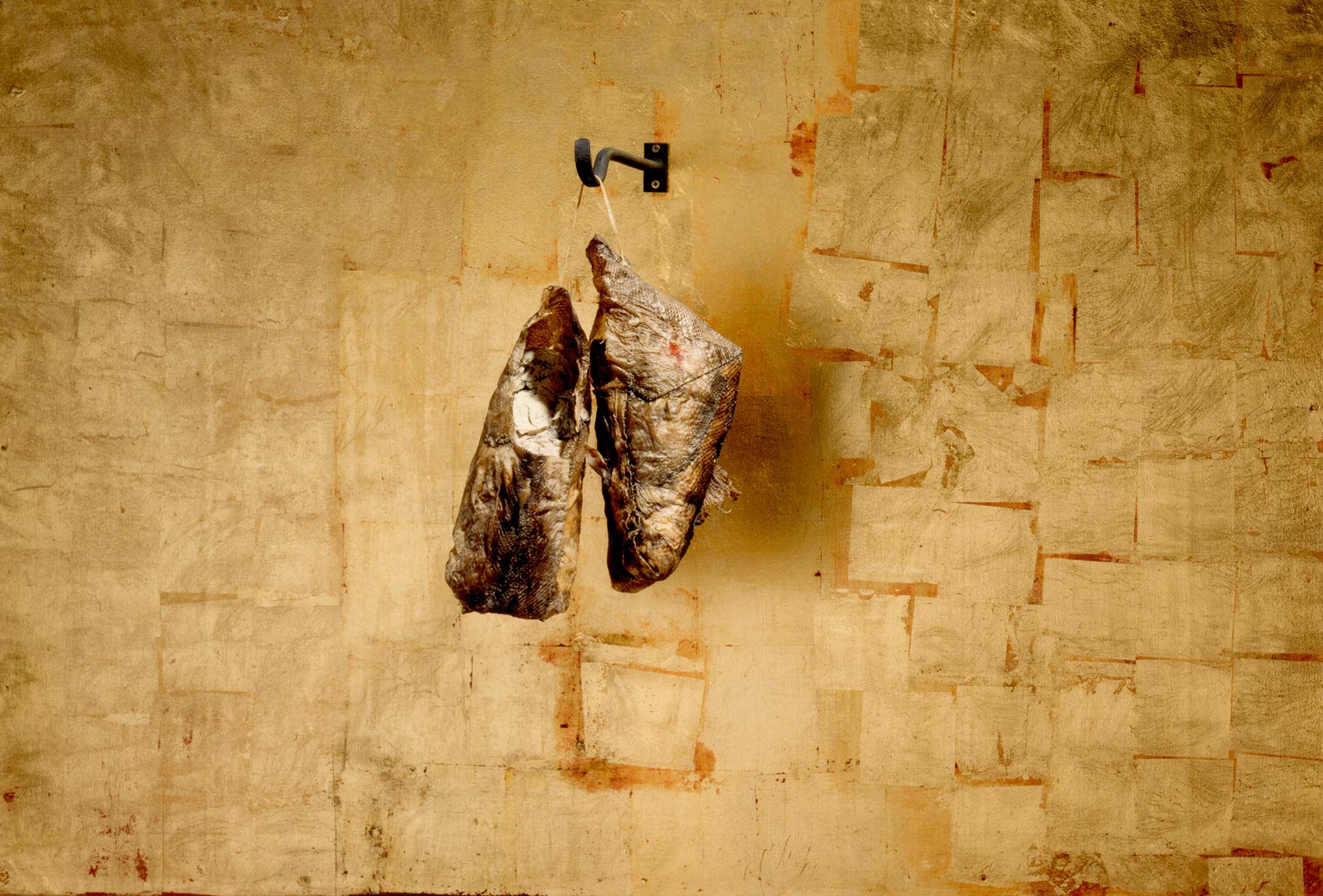
Gran fortuna. 1997. Piel de salmón, cuerda, papel de periódico y cable de acero. 56 x 20 x 30 cm.
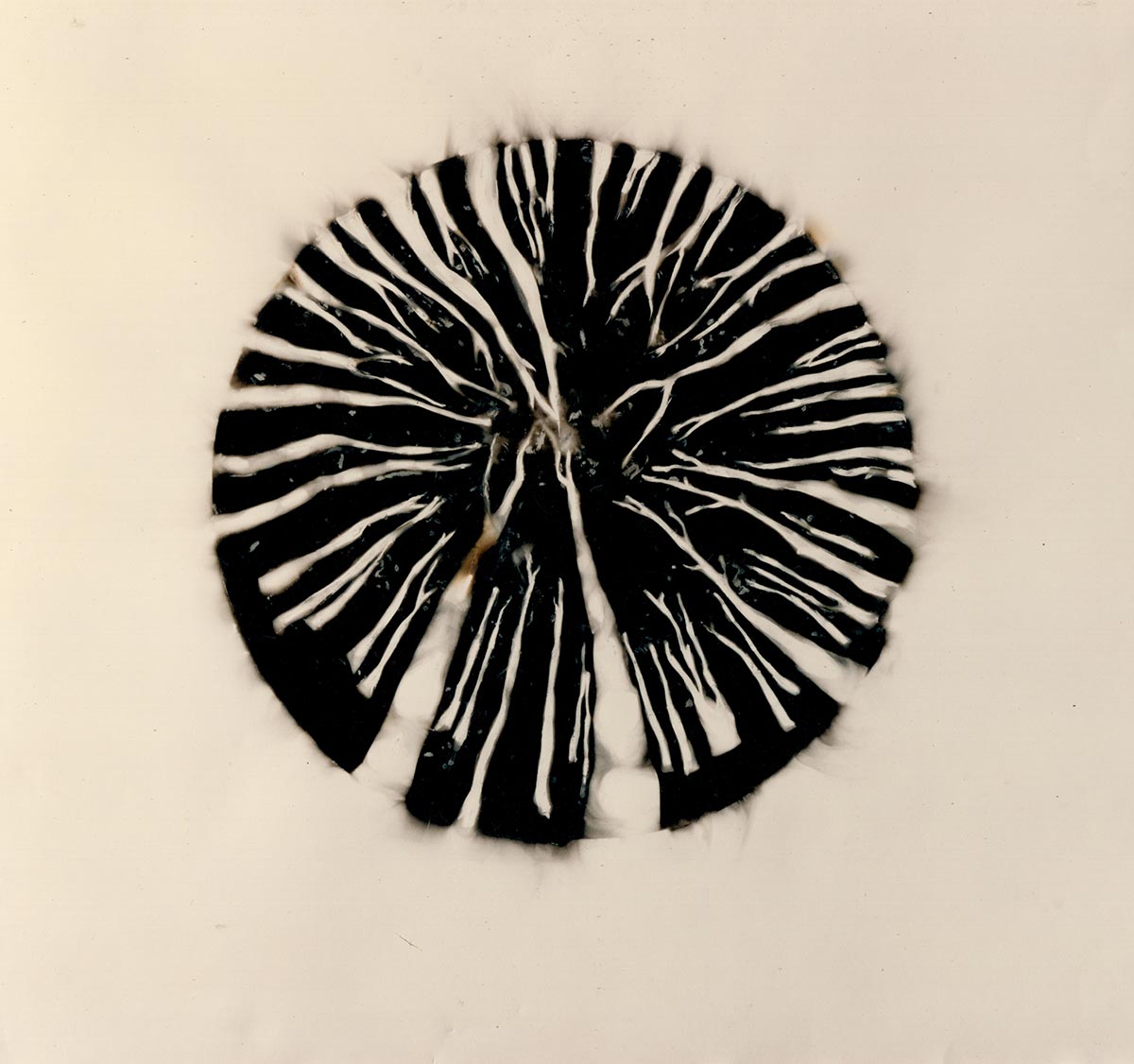
Bosque circular
1997. Humo sobre papel. 109 x 114 cm.
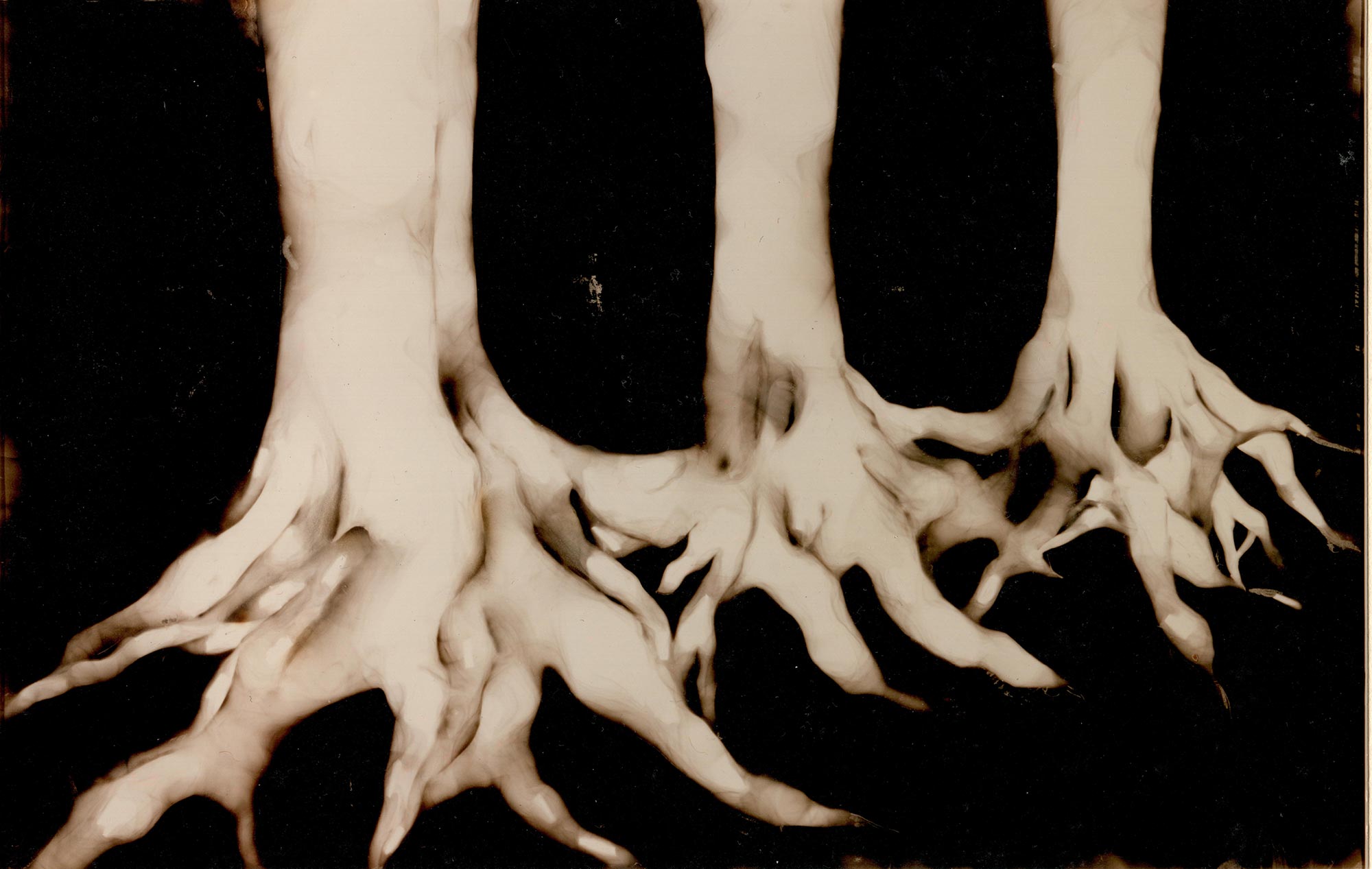
Ni oscuro ni claro 1997. Humo sobre papel. 55 x 73 cm. Colección particular.
Representación en la exposición de Pamen Pereira, en la que intervienen en la percusión Hiro Ota, a la flauta Kuma; en la danza la bailarina Michiko Matsumoto; en Recent Gallery Sapporo, Japón.
Estudio en el Sapporo Art Park. 1997.
Templo Zen Hó Kyo – Ji. Fukui 1996
